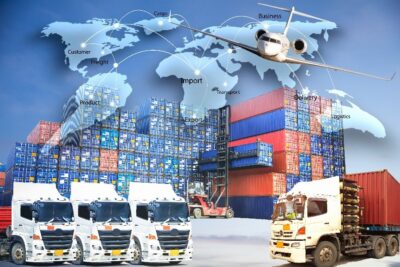By Christos Linardakis, Senior Counsel
Once upon a time in my corporate career, a VP of New Product Development proactively sought out the trade compliance department for advice on where to manufacture. Although he knew that China would probably offer the cheapest labor, he wanted to know if there were benefits if we were to build the products in Mexico or the U.S., or even Europe for that matter. When I asked him what his primary markets were for this new product, he mentioned the U.S. government (USG) and secondarily, Canada and Europe. When I explained and showed him the “total landed costs” for manufacturing in China, which included the duties, taxes, fuel surcharges and transportation costs, he was amazed at how much these added to the bottom line costs. Yet, even with all those costs added, it was likely to be more cost efficient to build in China than elsewhere. I then explained to him if the USG was his intended customer, then we’d want to look into what competitive advantages we’d have by building in Mexico or the U.S. I pointed out that the Buy American Agreement (BAA) and Trade Agreements Act (TAA) were often mandatory in USG contracts, and by building in China, the product would not qualify. I then pointed out that by building in Mexico, not only would the product qualify for the North American Free Trade Agreement (NAFTA), but also pursuant to the BAA and TAA; secondarily, if his next market was going to be Canada or Europe, then NAFTA would again come into play, as well as the Mexican-EU FTA (MEFTA).
I fondly recall how impressed he was with the compliance team’s skill sets as well as the value added services we offered. He saw that in order to break into the USG market, manufacturing would have to be in Mexico and/or the U.S. In addition, he immediately saw the benefits of MEFTA, since his product would now be duty-free into the EU, whereby his competitors were subject to a 6.7% duty rate – just the competitive advantage he needed to win the business.
With proper trade compliance programs in place, you can add value and bottom-line savings to your company.
Let’s say that your marketing/sales department is not aware of your role, and they are selling to Israel, their largest market. If they fail to seek your assistance in advance, then you can’t possibly advise them that there is a free-trade-agreement between the U.S. and Israel whereby the product could be duty-free, missing out on some significant savings.
In today’s corporate environment where budget costs and personnel are limited, communication with the trade compliance department is imperative not only to insure the company is protected from instances of regulatory non-compliance, but also to identify business opportunities and bottom-line impacts. Suggestions such as where to manufacture based on your company’s global footprint allow you to leverage the multitude of global free and regional trade agreements, thereby lowering total landed costs (by avoiding duties) on your raw materials and finished goods, while providing the company and its customers the competitive advantage of qualifying goods. Additionally, procurement, purchasing and import planners can benefit from the trade compliance team’s services in determining the appropriate harmonized tariff classification and country of origin for marking products, again demonstrating that the trade compliance department is not a business hindrance, but rather a business accelerator.
In another case, a purchasing agent not wanting to deal with the import formalities, the Customs broker, and the paperwork required to clear an import, requested the supplier quote the goods on delivered basis, after the transportation and duties were paid for the raw materials she was purchasing. During a routine audit of purchasing, we uncovered that this supplier had misclassified the materials we were purchasing; instead of entering the product under the correct duty-free provision, the supplier had incorrectly applied a dutiable provision. To our alarm, this had been going on for years. When we conclusively determined that the product was indeed duty-free, the supplier refunded hundreds of thousands of dollars of duties we had paid. In addition to the refund, we had reduced the cost of the goods sold or COGS of this product line, something that materially benefited the procurement department.
It was “wins” like this that quickly elevated the value of the trade compliance department within the company. While regulatory compliance should always be the number one priority, a well implemented compliance program also adds serious savings to the company’s bottom line.

























